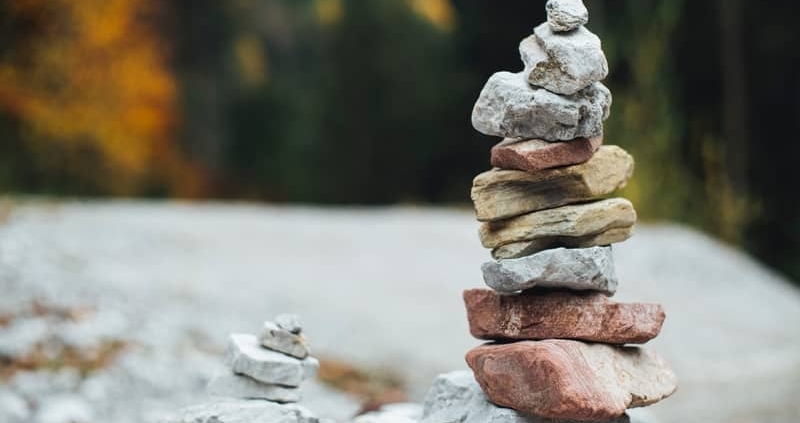Holy Rubble
We carry the spiritual and emotional burden created by images of destruction and despair that fill our screens. The media hesitates to show us the stark reality of the dead. Yet, they inundate us with images of rubble – the aftermath of conflicts that seem unceasing. From the shattered homes on Kibbutz Be’eri to the desolation in Gaza, human conflict scars our world. In the aftermath, our task is to pursue holiness in the building and the rubble.
In the Torah, we find resonance with our current struggles. At the start of Parshat Vayishlach, Jacob returned to Canaan. After a precarious meeting with his brother, Esau, Jacob attempted to settle his family in Canaan. He moved from Succoth to Shechem to Bethel. God reminded Jacob of the promises made to his fathers. Jacob created a pillar of stone. The journey continued. Then Rachel died in labor, and Jacob buried her along the road to Bethlehem. There, Jacob set a pillar of stones.
A pile of stones, or Matzevah, is a spiritual marker of where God spoke and where people are buried. Different cultures use stones to mark holy places for remembrance, good fortune, or as altars. Buddhists stack rocks for good fortune. The Norse people created a hörgr as an altar or cult site. In our modern world, we see echoes of this practice. Often, hikers stack stones on rugged trails, a reminder of the search for peace and tranquility. Even in times of destruction, we salvage wreckage for museums.
Others reduce structures to detritus. Some turn detritus into memorials, and wreckage may be salvaged for museums, the way we did with parts of the World Trade Center after September 11, 2001. The way the hulls of Israeli jeeps destroyed in 1948 line the old road to Jerusalem.
Bombs destroy buildings and take lives, leaving us with nothing but rubble. During one sleepless night, I watched as a reporter described the devastation in Be’eri. Then he showed us not just the rubble but the blood and body parts that stained the remaining walls. In the next segment, a Palestinian woman cried out, yearning to return home to unearth her relatives from under the debris.
If we focus only on individual suffering, all we see is rubble. Yet, holiness demands that we understand the context, the complex tapestry of history and conflict that led to this point. God promised Canaan to Abraham, Isaac, and Jacob. In commemoration of that promise, Israel has risen – a matzevah, a spiritual marker for the world to witness that the people of the Promised Land endure. Israel erected gleaming cities, institutions of scientific innovation, a democratic nation, and a haven for oppressed Jews.
At times, nations create piles of rubble in defense of their homes. Whether piles of stones or debris, holiness is not confined to quiet moments or scenic hikes. The pursuit of holiness should guide us when we tear down and build up.
In these challenging times, let us remember that even amid destruction, we have the power to build anew. Let our actions be guided by the pursuit of holiness, recognizing the sacredness in every life and our responsibility to create a world where peace and justice prevail.
May the piles of stones we create symbolize not just our pain but our resilience, compassion, and commitment to a world where the pursuit of holiness is our guiding light.
Rabbi Evan Krame






 Evan J. Krame was ordained as a rabbi by the
Evan J. Krame was ordained as a rabbi by the